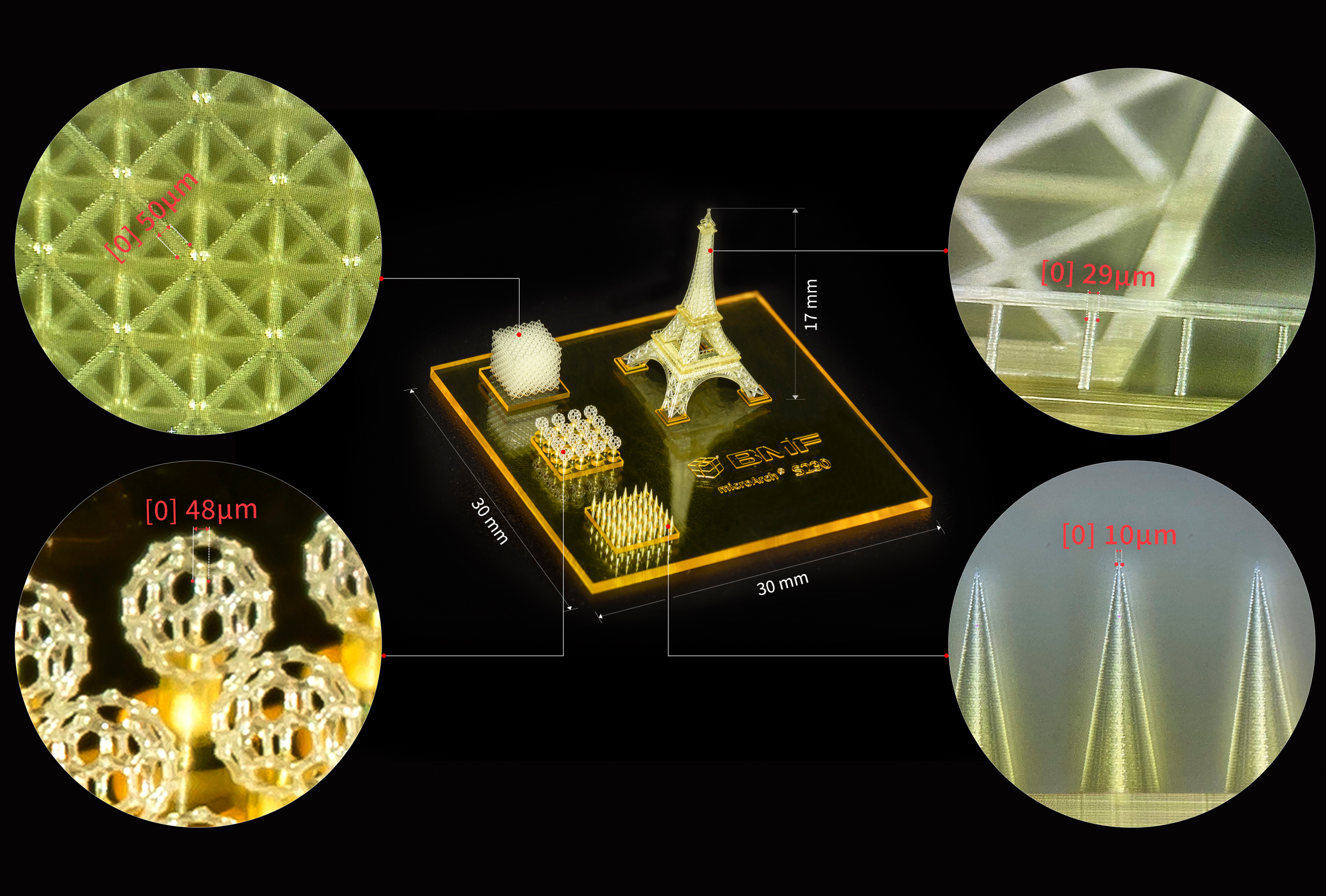Highlights:
- Innovative Microreactor Design
The helical-blade-strengthened co-flow focusing (HBSCF) device, manufactured with ultra-high precision PμSL 3D printing technology, features a distinctive helical subchannel structure that significantly improves the mixing efficiency of fluids, thereby enhancing the uniformity of particle size.
- Integration of High-Throughput Screening Technology
Combined with the independently developed automated high-throughput nanoparticle screening platform, the rapid optimization of the process conditions for nanoliposome synthesis was achieved.
- Potential for Industrial Application
This technology not only improves the quality of nanomedicine but also provides possibilities for continuous synthesis and industrialization, paving the way for clinical application and industrialization of nanomedicine.
The advancement of science and technology and the catalysis of market demand have enabled 3D printing technology to gradually penetrate into multiple fields such as healthcare, aerospace, and automotive industries from the initial prototype manufacturing. Particularly in the field of biomedicine, 3D printing is bringing revolutionary changes to drug preparation with its unique advantages.
In the nanomedicine field, the research team from the Shanghai Institute of Ceramics, Chinese Academy of Sciences, and Hangzhou Institute for Advanced Study, UCAS, has developed a helical-blade-strengthened co-flow focusing (HBSCF) device with a brand-new microchannel structure, and effectively integrated it with an automated high-throughput nanoparticle screening platform, to quickly obtain the optimal preparation process conditions for drug-loaded nanoliposomes that simultaneously meet the desired average particle size and the smallest polydispersity index (PDI).
The achievement is published in the academic journal Nano Today under the title “Combined helical-blade-strengthened co-flow focusing and high-throughput screening for the synthesis of highly homogeneous nanoliposomes.”
What is Nanomedicine?
Nanomedicines have great potential for application in cancer treatment, immune regulation, and transdermal drug delivery, owing to their unique size and surface effects. They can improve the bioavailability of drugs, reduce side effects, and achieve more accurate targeted therapy.
Breakthroughs in Nanomedicine Preparation Technology
Traditional nanomedicine preparation technology has some limitations, such as difficulty in controlling the particle size and uniformity of distribution. 3D printing technology, especially microfluidic synthesis technology, with its advantages of high controllability, tunability, and reproducibility, provides new ideas to solve these problems
The helical co-flow focusing microreactor developed by the research team was manufactured using BMF’s ultra-high precision PμSL 3D printing technology. This device not only solves the problems of poor pressure resistance and low synthesis throughput of traditional microchannel reactors, but also significantly improves the radial mixing efficiency of fluids through its unique helical subchannel design.
The high-throughput screening technology combined with the HBSCF device can further improve the optimization efficiency of the nanoliposome synthesis process. This combination allows researchers to quickly obtain the optimal preparation process conditions for drug-loaded nanoliposomes that meet the desired average particle size and the smallest polydispersity index (PDI).

Prospects for Industrial Application
In recent years, there has been an increasing amount of research on microreactors, and their potential application prospects have been widely recognized by academia and industry.The innovation of this technology not only improves the quality and uniformity of nanomedicine, but also provides strong support for industrial applications. Researchers can achieve continuous synthesis of nanomedicine based on optimal technical parameters without changing the type of microreactor, which is significant for promoting clinical application and industrialization of nanomedicine.
This research not only provides a new technical path for the preparation of nanomedicine, but also broadens new horizons for future personalized medicine and precision medicine. With the continuous maturation and optimization of the technology, 3D printing technology will play an increasingly important role in the field of medicine.
- For the full article, please check: https://doi.org/10.1016/j.nantod.2024.102301
- Contact us via https://bmf3dapac.com/#contactto get a customized inquiry on our device or printing service.


